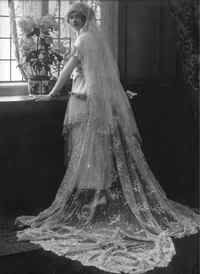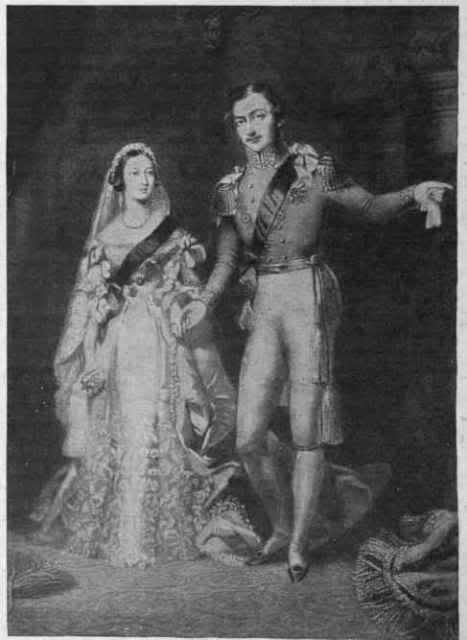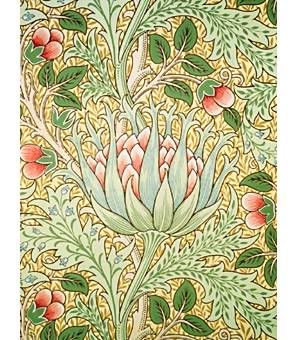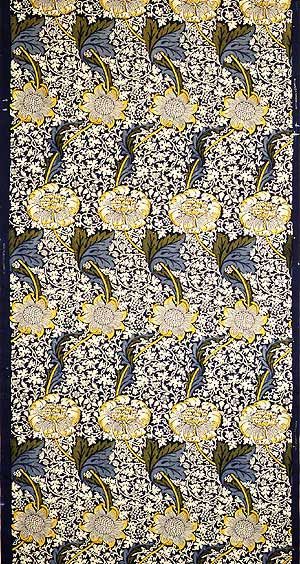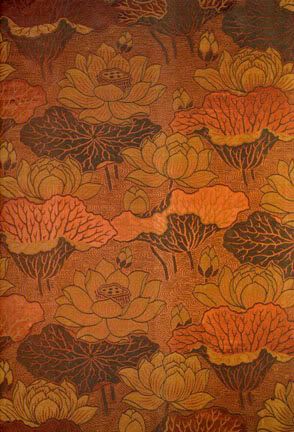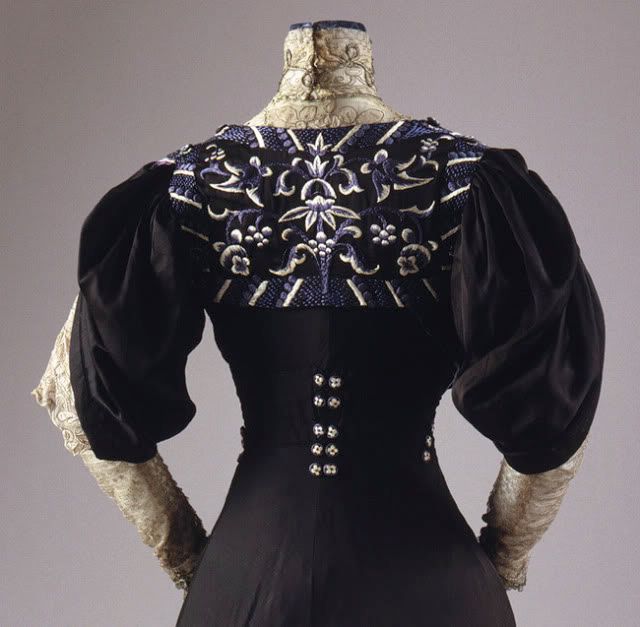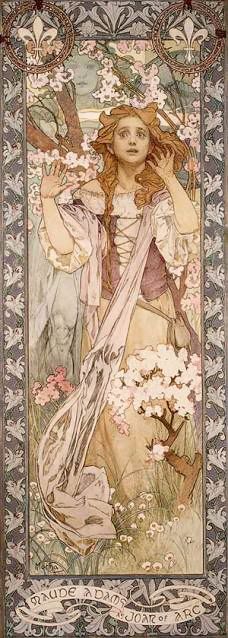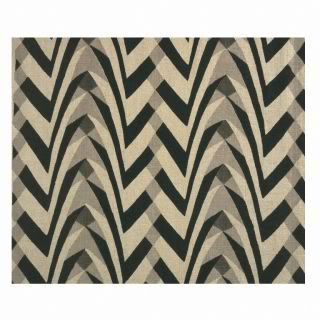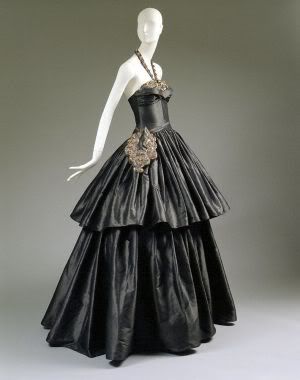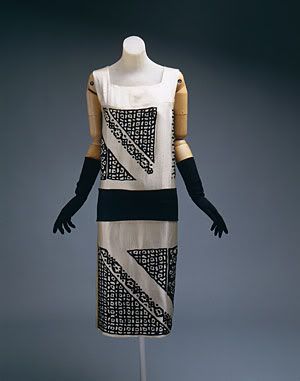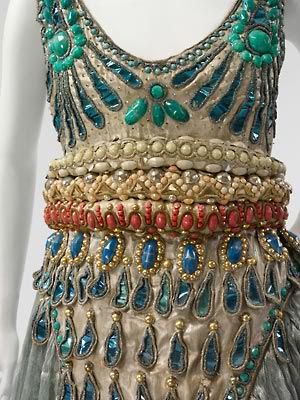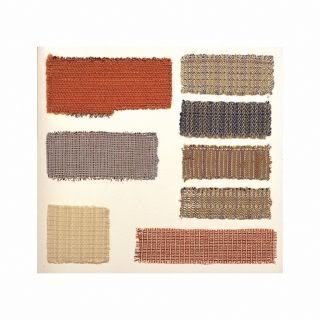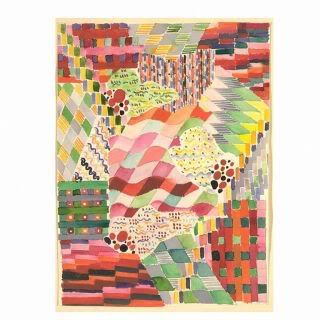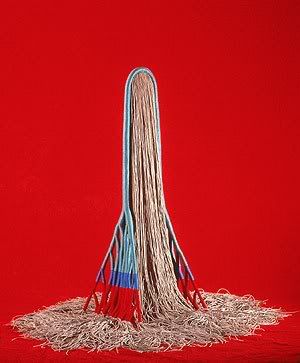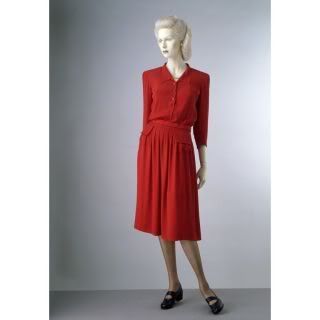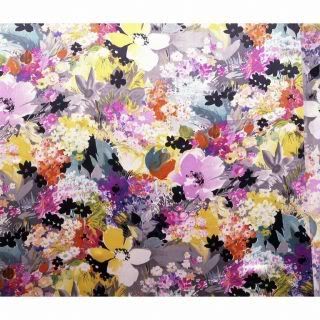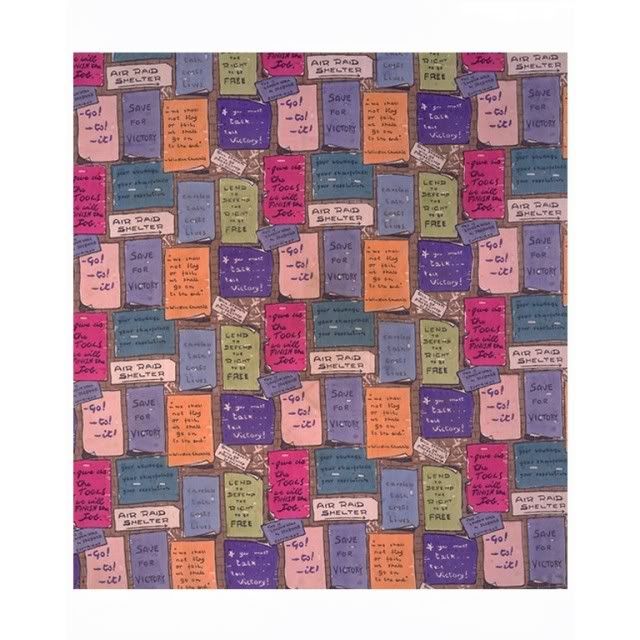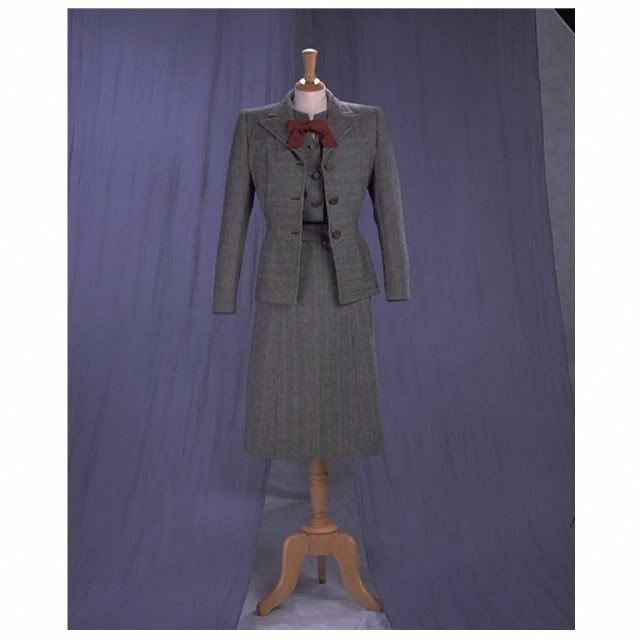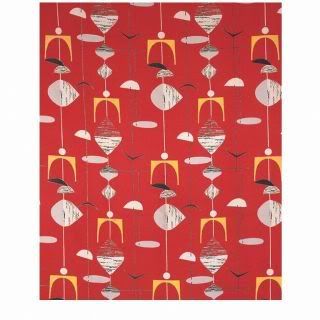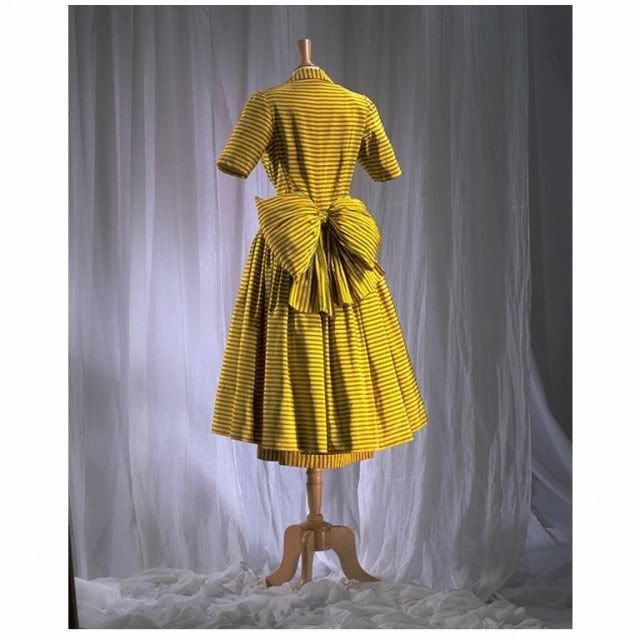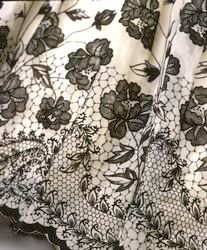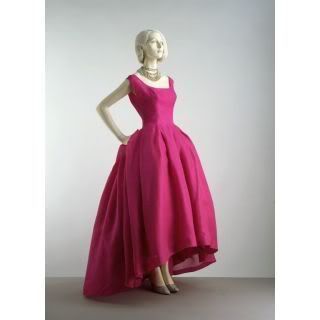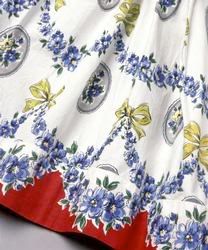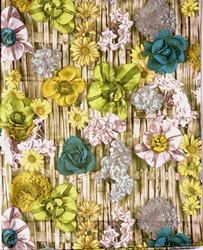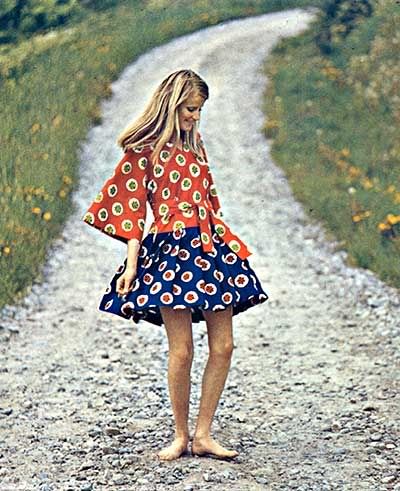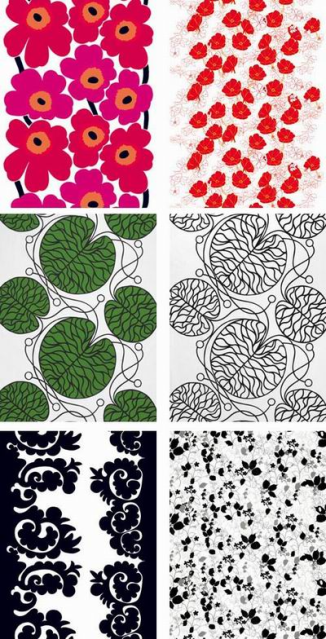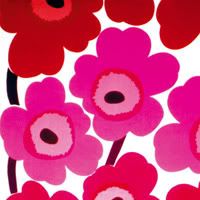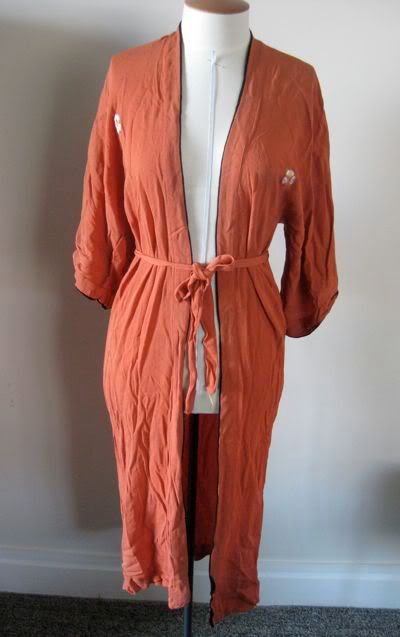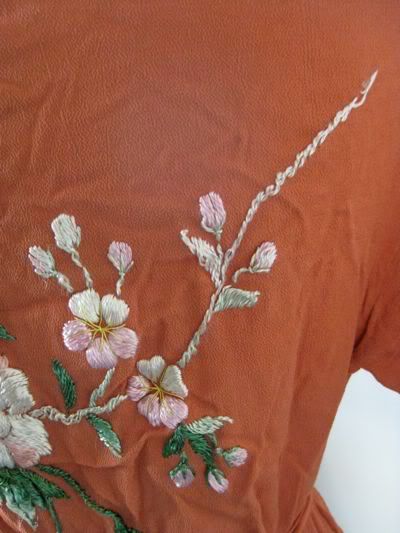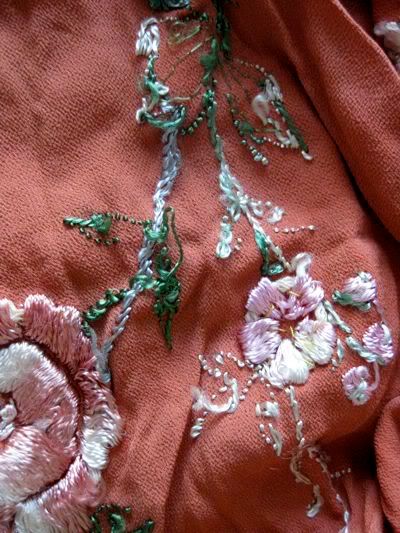
I've never heard of hailstone muslin, and was quite intrigued.
My first impression was to call the fabric dotted swiss, but I did notice that the dots seemed to be constructed differently than I would expect for a true dotted swiss

In the fabric of the hailstone muslin dress, the dots were woven into the fabric, and then the extra threads cut away on the back of the fabric.
The true dotted swisses that I am familiar with have the threads for the dots wrapped from front to back, as occurs with the needle and bobbin threads of a sewing machine, or in hand embroidery.
The modern usage of 'dotted swiss' covers any light, crisp fabric with raised dots. The dots may be applied in any fashion. Does this mean that hailstone muslin is just another name for a slight variant on dotted swiss? I decided to research.

The only references to hailstone muslin that I can find online or in reference books are from Australian and New Zealand sources.
The Brisbane Courier notes that on Thursday 4 Feb 1892 "Miss L Blakeney [wore] white hailstone muslin with pale blue and pink sprigs, black turned up sailor hat and pink sprigs" to a reception at Government House.
On Feb 24 1899 the society pages of The Perth Courier mentions a wedding in which "[The bride's] little niece Alta Genevieve Hughes acted as maid of honor and carried on a pretty little tray the wedding ring. She was dressed in white hailstone mull trimmed with lace and wore a heavy silk sash caught up with a dainty buckle."
The Sydney Mail, on Jan 7 1909 features an illustration of a charming house gown in hailstone muslin
The Powerhouse Museum, in Sydney, has a baby's hailstone muslin short frock, ca 1900, a child's hailstone muslin dress with double cape, ca 1910, and a little girl's dress of hailstone muslin from 1950.
The New Zealand Railways Magazine has a number of mentions of hailstone muslin in its fashion section.
Volume 10, Issue 8 (November 1, 1935) suggests in its 'Timely Notes and Useful Hints from Helen' "For a frilly summer dance frock what could be more charming than hailstone muslin with contrasting ribbons."
More mentions are made in Robin Hyde's semi-autobiographical account of being raised middle class in working class turn-of-the-century New Zealand, The Godwits Fly.
Any more information on hailstone muslin would be much appreciated!



